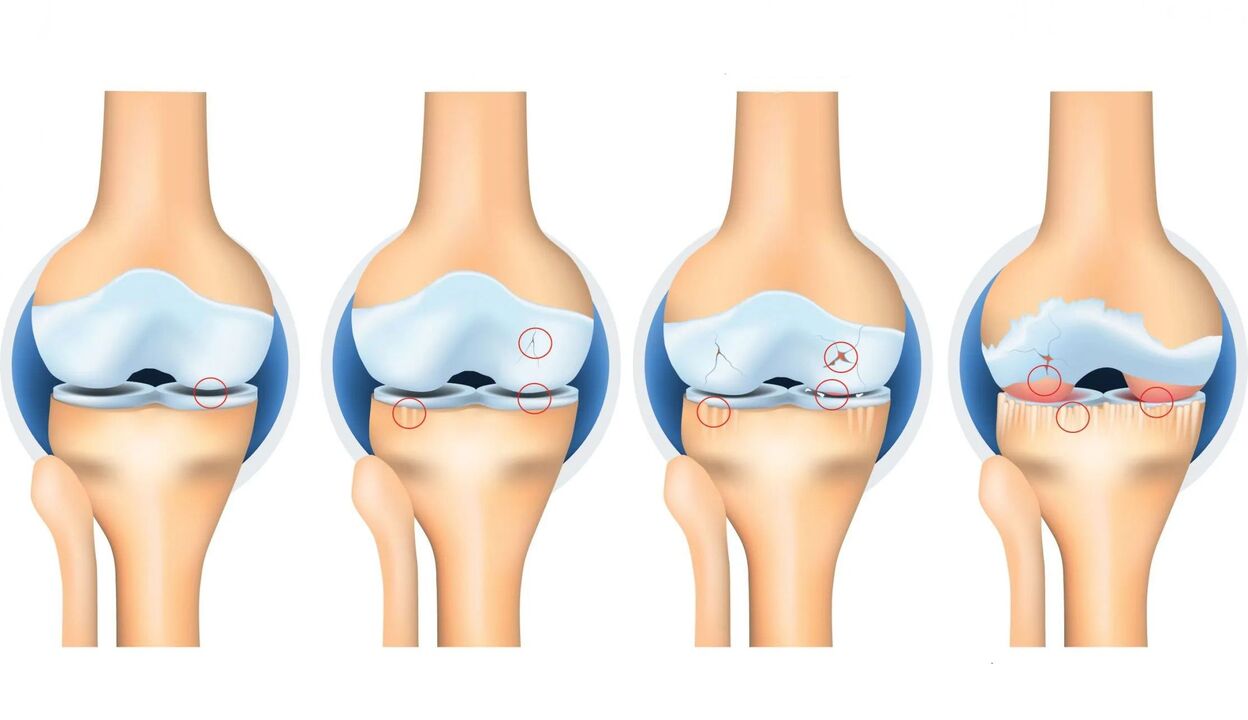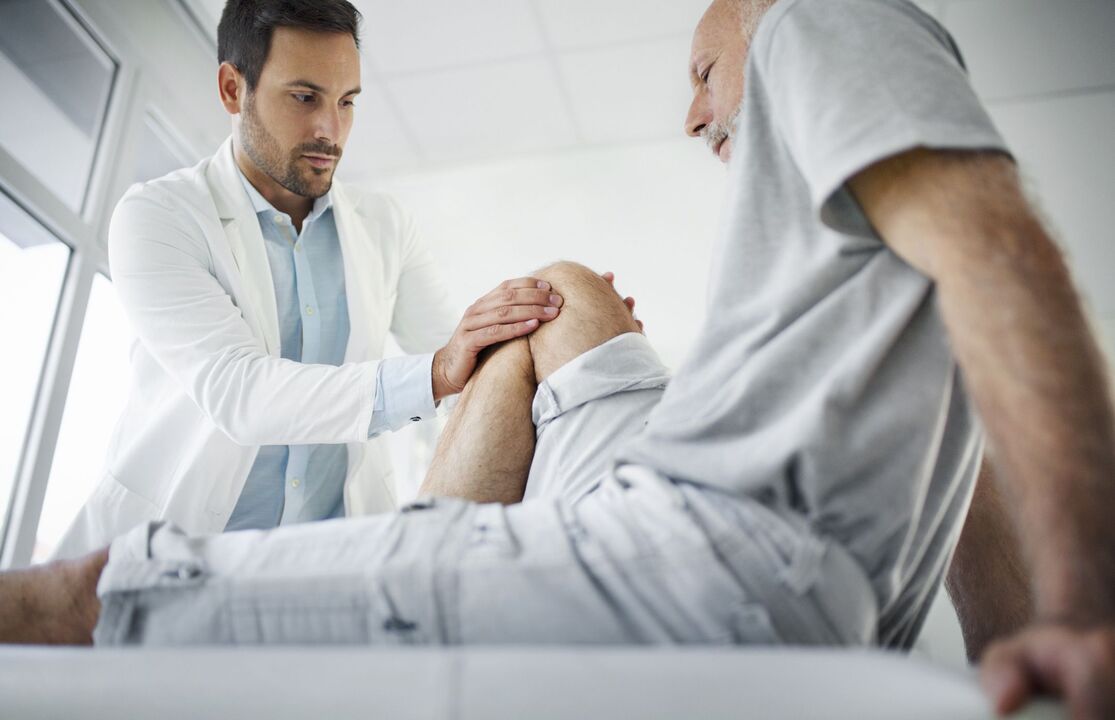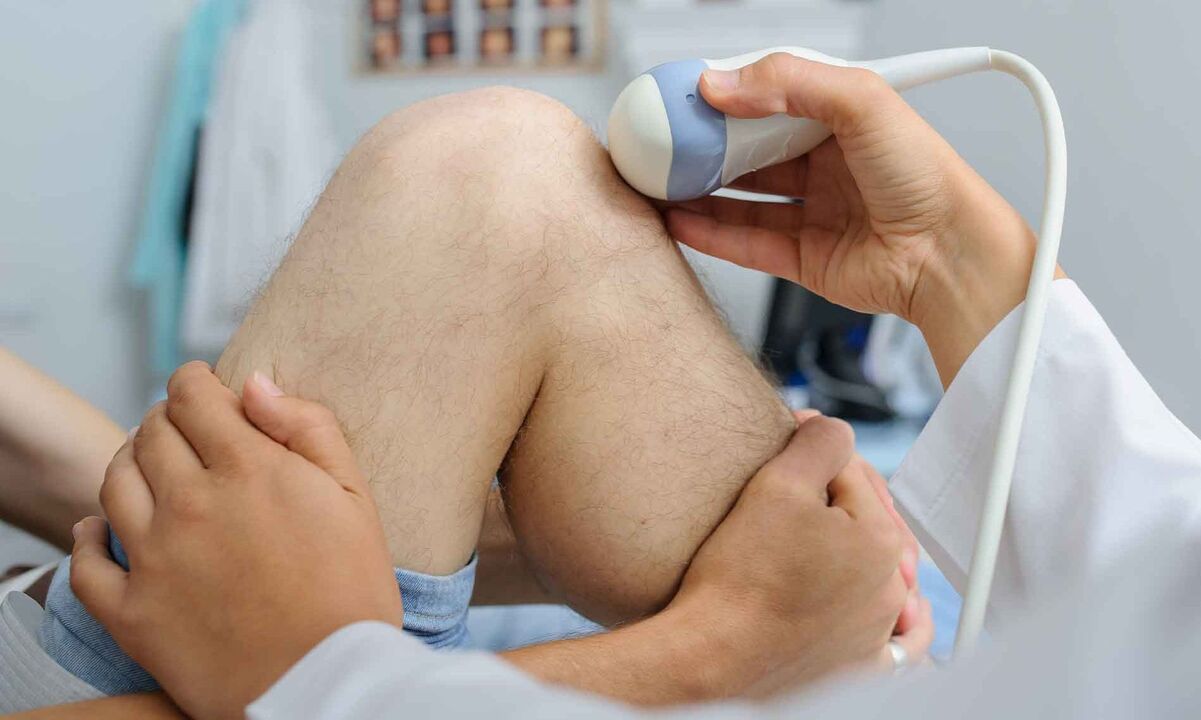Arthrosis- a very common disease. It begins to form at about 35-50 years of age, and in people over 70 this disease manifests itself to varying degrees and is diagnosed with75-90%probability. Previously, orthopedists placed arthrosis closer to old age, but now the pathology has become "younger. "Ignoring the disease is problematic, because over time it can lead to partial or complete immobility and disability.
Arthrosis is a chronic disease of joints and cartilage associated with the gradual but steady destruction of the latter, and bone tissue grows instead of cartilage.
It is obvious that the joint is the most important component of the musculoskeletal system, since it is the connecting link between the bones. The most common are coxarthrosis (pelvis), gonarthrosis (knees) and arthrosis of the shoulder joint. Small joints are also affected, for example, the hands, wrists, and spine are affected.

What is arthrosis?
If we explain the essence of this disease simply, then it is characterized bydestruction and degradation of the joint structure.The bones that the joint holds are covered on one side with cartilage, which performs a protective function. Thanks to these structures, the bones do not wear out.
There is such a thing ascongruence.It implies conditions that ensure painless and effective movement of bones in the joint. Thus, chondrone or cartilage plays one of the main roles in the functioning of the structures located in the joint capsule. Inside it is located synovial fluid, regularly secreted by the mucous membrane. This is a very important substance that prevents the occurrence of destructive mutual friction of joint surfaces. The fluid also ensures the metabolism of articular cartilage, since its structure lacks such an opportunity. That is, the chondrone is supplied with the necessary nutrients, and toxins are actively eliminated.
When pathological processes come into play, cartilage begins to deteriorate. Some doctors believe thatdestructiondoes not begin in the chondrone, but directly in the bone tissue. Over time, its density decreases catastrophically, and the cartilage is destroyed. Osteophytes appear on the bone - pathological growths, which popular rumor classifies as so-called slags or salt deposits. In reality, this is completely untrue.
After the destructive process gradually destroys the articular mechanism, nature’s compensatory strategy kicks in, filling the resulting void with useless fibrous tissue. It does not perform any functions in the body, only creating unnecessary stress. In advanced cases, connective tissue fills all available space, completely blocking movement. This condition is called ankylosis, that is, fusion of all joints. Externally and internally, the joint, along with tendons, muscles, and so on, is deformed.
Causes of arthrosis
Any orthopedist will name the main reason for the development of arthrosis - wear and tear of the joints due to inadequate loads, metabolic failure, or simply time. Several risk factors can also be combined.
Here are the main ones:
- Unfavorable genetics.
- Elderly age.
- Vitamin deficiency (calcium deficiency).
- Physical inactivity.
- History of trauma.
- Diseases that destroy connective tissue.
- Obesity.
- Endocrine diseases.
- Inadequate loads when playing sports.
- Orthopedic pathologies.
- Diseases of the heart and blood vessels.
- Occupational deformation at the physical level.
- Pathologies of the kidneys and liver.
- Congenital anomalies of the joint structure.
Several of these factors may be present, which greatly increases the risk of arthrosis. If a person has scoliosis, joint dysplasia, or rheumatism, then in this case arthrosis is considered secondary, because another disease led to its appearance.
It is noteworthy that uncomfortable or poor-quality shoes can lead to this dangerous disease.
As for professional deformation, some people, due to their work, perform a number of stereotypical, repetitive movements for a long time. For example, arthrosis of the wrist joint most likely affects mechanics, and arthrosis of the knee joint most likely affects loaders carrying heavy loads. Ballerinas suffer from ankles, and drivers suffer from shoulders.
Symptoms of arthrosis

Pain– the most important symptom of arthrosis. When bones rub without synovial fluid and cartilage, it inevitably occurs. During rest, the pain may subside slightly, but during exercise it may intensify. It also occurs at night, which is facilitated by a decrease in circulatory activity and congestion.
Pain with arthrosis can be divided into several types:
- Pain in the morning.It is also called the starting one and such discomfort appears after waking up. However, it is short-lived and later, when the person disperses, disappears.
- Mechanical discomfort. Typically, this sharp pain occurs due to blockage or impingement of the joint structure. It is impossible to move with such pain.
- Meteosensitivity. The nature of the pain is obvious from the name - it is aching, unpleasant and intrusive; many people call this condition: "it hurts due to the weather. "
The initial stage of arthrosis gives way to a more severe one, and this process is accompanied by pain of a permanent nature. The skin over the affected joint becomes red, swollen, and hot. Arthrosis is characterized by an alternation of exacerbations and remissions, and the further the process goes, the more the second indicated condition is reduced in time, and the first increases.
Arthrosis often occurs during pregnancy, so often, along with a gynecologist, a woman is treated by a traumatologist
Skin pigmentation may occur at the site of joint deformation, and muscle tone changes. Also, depending on the location of the pathology, not only movement difficulties occur, but also headaches if, for example, arthrosis has occupied the cervical vertebra.
Classification of arthrosis
First of all, the localization of the pathology matters. Most often this is the spine, lower or upper limbs. The knee and hip joints take on a huge amount of stress, so they are statistically the most affected. By the way, the first of the named locations of arthrosis is most characteristic of the female body.
When it comes to the spine, spondyloarthrosis is often diagnosed. It is characteristic of the lumbar region. A person in such situations has difficulty carrying loads and cannot stand for long. Uncovertebral arthrosis is diagnosed when the cervical spine is affected.
For the lower extremities, arthrosis in the elbow and shoulder joints is relevant. This is not surprising, since the mentioned locations are subject to increased trauma and stress.
According to the nature of their occurrence, arthrosis is divided into:
- Primary.
- Secondary.
In the first case, this is an imbalance between the synthesis and degeneration of joint tissue, and in the second, the appearance of arthrosis against the background of previous diseases as a complication.
There are also different degrees of arthrosis. There are only five of them, the first of which is zero, with no external signs of the disease.
- Arthrosis 1st degree.It is characterized by an almost imperceptible narrowing of the gap in the joint.
- Arthrosis 2 degrees.At this stage, the situation worsens slightly: the gap does not narrow any further, but uneven surfaces of the joint appear.
- Arthrosis 3 degrees.Here all the above signs are intensified.
With arthrosis of the fourth degree, the bone tissue becomes necrotic and the joint becomes deformed. Treatment of arthrosis necessarily takes into account the degree of the disease in order to better design a therapeutic regimen.
Stages of arthrosis
Staging of the disease occurs in three stages.
- First stage.The condition is characterized by a slight restriction of movement and the appearance of osteophytes, almost invisible during examination.
- Second stage.At this stage, the mobility of the joint is even more limited, a crunch appears when moving, and growths on the bones increase. Slight atrophy of muscle tissue may be observed.
- Third stage.The joint is deformed and this can be seen even externally. It is very difficult for the patient to move, the joint space practically disappears, and the osteophytes are significant. Cysts are sometimes observed.
How are arthrosis diagnosed and treated?

Treatment of this disease, which is quite common on the planet, involves a number of diagnostic procedures. But first there is a survey and examination of the sick person. In advanced stages, deformation of the joint, changes in its contour are visually visible, and the patient complains of difficulties in movement.
The following diagnostic tests are prescribed:
- X-ray.
- MRI.
- Ultrasound.
An X-ray examination can show the condition of the joint spaces and what the growth of bone tissue looks like, but fibrous structures are not visible with this diagnostic method. For this purpose, magnetic resonance imaging is used.
But ultrasound examination is very informative at the first and second stages of arthrosis, since the most minimal and insignificant changes in the articular structure are noticeable.
Treatment of arthrosis is divided intoconservative and surgical. The first type involves unloading the joint, which is its main goal. To do this, it is necessary to perform a number of therapeutic exercises and lifestyle adjustments (excluding heavy lifting, etc. ). If obesity has led to arthrosis, then therapeutic measures will be aimed, in particular, atpatient weight loss.In the initial stages of arthrosis, an increase in physical activity, however moderate, helps greatly. Cycling, swimming, therapeutic walking - all this is used by doctors in the conservative treatment of the disease.
As for medications, they are relevantchondroprotectors or hyaluronic acid– they are injected directly into the joint. Thus, the course of the disease is stopped, preventing further degradation of the articular components. They use hormonal and anti-inflammatory drugs, anesthetics, and medications to improve the microcirculation of biological fluids.
Muscle tone is increased through physiotherapy, e. g.UHF or phonophoresis.Massages are also used, most importantly, according to the doctor’s indications.
The gold standard of treatment is arthroscopy. The procedure involves inserting a special device, an arthroscope, into the joint cavity. Thanks to technical capabilities, its internal structure is visualized, so the surgeon removes dead tissue, polishes the surfaces, washes the cavities, in a word, performs mechanical reconstruction.
If synovitis occurs, the fluid must be pumped out, so joint puncture is used. As part of the procedure, medications are also administered to restore the functionality of the motor unit.
The most radical type of intervention isendoprosthetics. It is used if there is no other way to influence the joint. This usually happens in advanced cases. Endoprosthesis replacement is suitable for the hip joint, as well as the knee.
Prevention of arthrosis
Arthrosis is a chronic and irreversible disease, which can still be stopped or its development can be significantly slowed down. Preventive measures include dosed and reasonable physical activity, avoiding physical inactivity or overexertion. This is especially important for representatives of the above professions. You should also treat diseases of the orthopedic system in a timely manner, avoid critical weight gain and wearing uncomfortable shoes.
Diet for arthrosis
Nutrition plays a vital role in arthrosis. Doctors recommend eating poultry as a source of protein, dairy products (especially butter), greens, cereals, nuts, and fatty fish.
On the contrary, you should not eat a lot of baked goods made from wheat flour, muffins, confectionery, fast food, salty, pickled, hot and sour dishes. You also need to give up alcohol and soda. Interestingly, even ice cream can be harmful for arthrosis!
Fasting for this pathology is recommended under the supervision of a nutritionist for those patients who are obese.
How do I understand that I have arthrosis?
With this disease, there is morning short-term blocking of the joints, pain due to the weather, and in advanced cases, discomfort is observed even at night when the person does not move. In the first stages, painful sensations are recorded when moving, and in a state of rest the pain goes away.
Is it possible to defeat arthrosis?
It is impossible to completely cure the disease, but it is possible to stop the degenerative process. The main thing is to see a doctor as early as possible.
What should you not do if you have arthrosis of the joints?
You should not put too much stress on your joints by lifting weights and, on the contrary, limit yourself excessively in your movements. It is not recommended to eat fast food, a lot of chocolate and ice cream, carbonated drinks, alcohol, and marinades.
























